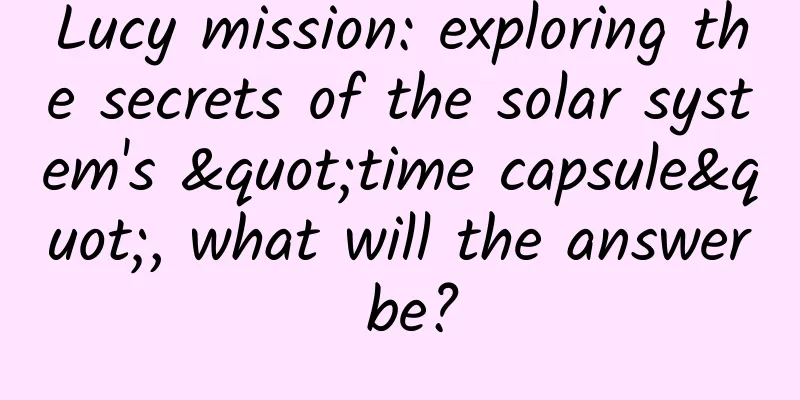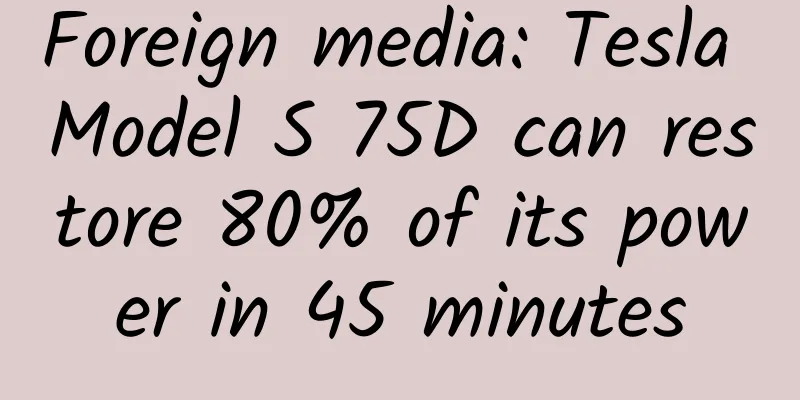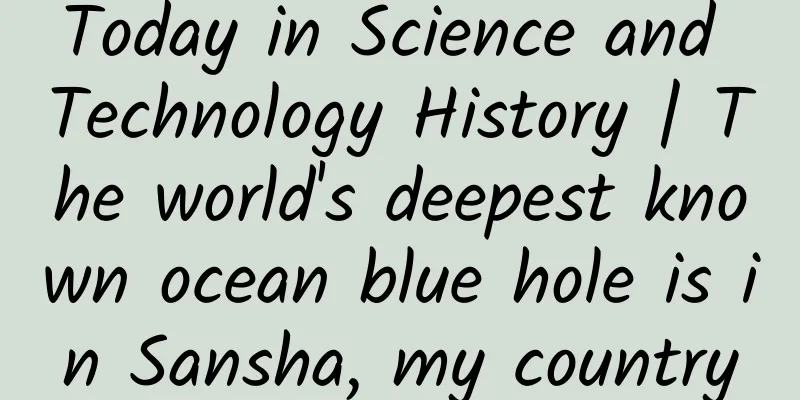Lucy mission: exploring the secrets of the solar system's "time capsule", what will the answer be?

|
"Lucy" is the name given by a group of scientists to an ancient human fossil unearthed in 1974. This is the skeleton of a female human ancestor, which provides important clues for studying the history of human evolution. The "Lucy" probe is named after this name. It was developed and launched by NASA (National Aeronautics and Space Administration) and traveled a long distance to explore the mysterious "Trojan Asteroid Group" in the orbit of Jupiter. Its mission is to understand the origin of the solar system and planets such as the Earth, and to provide clues to the evolution of the solar system in a larger context. Therefore, it has the same purpose as its ancestor "Lucy". NASA scientists named the probe this way, which shows that they have greater expectations for it. Lucy was successfully launched on October 16, 2021 and embarked on a long journey. Along the way, it will explore alone in the dark deep space for 12 years. According to NASA, its mission is to find the "time capsule" of the solar system. So what does this "capsule" look like and how to find it? Let's find out together. First understand what the Trojan asteroid group is/ Troy was originally a city-state in ancient Greece. It became famous because of the Trojan War described by the ancient Greek poet Homer in his epic poem "Iliad". The most famous plot was the "Trojan Horse". Simply put, the Greek Spartan king led his army to attack Troy in order to avenge the Trojan prince who stole his wife. However, since Troy was very strong, they could not capture it after 10 years of attack. Later, they adopted the "Trojan Horse" and succeeded in one fell swoop. The specific method was that the Greek army pretended to retreat, leaving behind a huge wooden horse, which was pulled into the city by the Trojans as a trophy. That night, a group of Greek warriors hiding in the belly of the huge wooden horse slipped out and opened the city gate when the Trojans were celebrating their victory and relaxed their vigilance. The Greek army that had been ambushed outside the city rushed in and trampled Troy into ruins overnight. Later, the Trojan horse came to symbolize "scam", and modern computer malware and viruses are also called Trojan horses, or "Trojan horses" for short. Scientists call these asteroids in the planet's orbit Trojan asteroids. Perhaps they think these asteroids are a bit like the Greek warriors hidden in the horse's belly in the Trojan Horse. They have been hiding in the same orbit as the planet and following the planet. One day they will suddenly attack the planet. The word "group" in the Trojan asteroid group indicates that Trojan is not a single asteroid, but a group of asteroids. This type of asteroid was first discovered in the orbit of Jupiter, and they are located in Jupiter's Lagrange point. The so-called Lagrange point is the gravitational balance point between the sun and a planet. Each planet has five Lagrange points, represented by L1~L5. Among them, L1~L3 are on the line connecting the two celestial bodies, and L4 and L5 are on the front and back sides of the planet's orbit. As early as 1904, Barnard may have observed Trojan asteroids in Jupiter's orbit, but it was not taken seriously at the time and therefore not recorded; in 1906, German astronomer Max Wolf discovered an asteroid in the Sun-Jupiter Lagrange point L4 and named it after the hero Achilles in the Iliad. After that, more and more asteroids were discovered in the Sun-Mary Lagrange points L4 and L5. People followed suit and named them after characters in Homer's epic poems, most of which were named after characters in the Trojan War. These asteroids were collectively called the Trojan asteroids. Jupiter's Trojan asteroids are mainly distributed at the L4 and L5 points of Jupiter, located symmetrically at an angle of 60 degrees in front and behind Jupiter's orbit. As of September 2007, there are 2,239 confirmed Jupiter Trojan asteroids, of which 1,192 are at the L4 point and 1,047 are at the L5 point. As observations continue to deepen, astronomers have discovered that the Trojan asteroid group phenomenon is not unique to Jupiter. For example, 29 asteroids have been found in the orbit of Neptune, more than a dozen have been found in the orbit of Mars, and many of Saturn's satellites are also in the Lagrange points of their orbits. These asteroids all share orbits with planets, revolving around the sun at a position not too far from the planets. Now two such asteroids have been discovered on Earth. One was discovered in 2011 and is called 2010TK7; the other was discovered recently and is called 2020XL5. Both are located in the Sun-Earth Lagrange point L4. Why are there so few Trojan asteroids in Earth's orbit? This may not be the case, but rather that Earth-like asteroids are more difficult to detect. To observe Trojan asteroids from Earth, you must use a telescope to stare directly at the sun to find them, and these asteroids are relatively small and have a low albedo, making them difficult to detect under the strong light of the sun. Scientists believe that with the improvement of observation technology, more Trojan asteroids will be found in the Earth's orbit. These discoveries give scientists reason to believe that the Trojan asteroid phenomenon is common in planetary orbits. Therefore, this type of asteroid is collectively called a Trojan asteroid regardless of which planetary orbit it is in. Why are the Trojan asteroids a "time capsule" of the solar system? All planetary systems are born around stars, and the birth of stars originates from the contraction of huge nebulae (cosmic dust). The result of contraction is the birth of one or more stars in the core, and the remaining dregs aggregate and absorb to become planets and various small celestial bodies. In many of my past articles, I have introduced the origin of the universe, the origin of the solar system, the origin of the earth, and their evolution history, so I will not elaborate on them here. Scientific research suggests that Trojan asteroids are the remnants of the formation of large planets and are likely to be the basis for the formation of planets and satellites. Because the orbits of these asteroids or satellites are unstable, they may pose a threat to the planets. Some scientists believe that the Mars-sized planet that hit the Earth 4.5 billion years ago may have been hidden in the Lagrange point of the Earth's orbit and hit the Earth due to orbital perturbations. Scientists called the planet that hit the Earth "Theia". Its close contact with the Earth caused the Earth's axis to tilt, forming an obliquity of 23.44 degrees. Since then, the Earth has four seasons of spring, summer, autumn and winter. The lava and dust condensed into the moon, which gave the Earth greater tides. These changes and conditions gave birth to life on Earth by accident, and gave us today. Therefore, scientists believe that these Trojan asteroids are products of the same period as the formation of the sun and planets, and are the earliest fossils of the solar system. They contain the code of the formation of the solar system, and are therefore "time capsules" of the solar system. In-depth analysis and understanding of this type of "time capsule" will enable us to more clearly understand the past and present of the solar system. Thus, Lucy came into being, shouldering the mission of exploring the solar system, the Earth, and where humans come from and where they will go in the future. Of course, this exploration is only a small piece of the puzzle of human exploration of the universe and nature. Only by piecing together thousands of small pieces of exploration in the future can we get a glimpse of the mysteries and the whole picture of the world and ourselves. Lucy's specific mission/ The total investment in the Lucy mission reached US$981 million, which seems like a lot, but it is called the most "stingy" mission in NASA's history. This is because Lucy's mission is very heavy. Unlike previous asteroid probes, which only need to explore one or two asteroids, it will successively explore eight asteroids. In this way, the cost of each asteroid is only more than 100 million US dollars, so it is called the cheapest interstellar exploration in history. The Lucy probe is about 5 meters tall, has a launch weight of about 1,550 kilograms and a dry weight of 821 kilograms. The main instruments it carries include: thermal emission spectrometer, long-range reconnaissance imager, infrared imaging spectrometer, multi-spectral visible light imaging camera, etc., and of course the necessary navigation and communication equipment for contacting the earth, power batteries, etc. One of the main features of Lucy is that it is equipped with two huge circular solar panels, which are 14.25 meters wide and 51 square meters effective when unfolded. The intensity of sunlight near Jupiter's Trojan asteroid belt is less than 3% of that on Earth. In order to ensure the power requirements of Lucy, such a huge solar device is equipped. This solar panel can obtain 500 watts of electricity in the weak sunlight of Jupiter's orbit, and Lucy only needs 82 watts of electricity to ensure all normal needs. It seems to be very conservative, but what happened after the launch verified the scientists' foresight. During the 12 years of its mission, Lucy will use the Earth's gravity to slingshot its speed three times, eventually reaching a speed of 560,000 kilometers per hour, or 155.6 kilometers per second. These three "circles" around the Earth appear to make the circle bigger and bigger, and eventually the circle is big enough to enter the orbit of Jupiter and drill into Jupiter's Trojan asteroid group. The first of these flybys will take place in October 2022, the second in December 2024, and the third in December 2039. Lucy will actually accelerate after the second flyby and head straight for Jupiter's orbit. In April 2025, Lucy will perform its first asteroid exploration mission on its way to Jupiter's orbit. The asteroid is called Polymele. It is not a Trojan asteroid in the orbit of Jupiter, but a member of the main asteroid belt between the orbits of Mars and Jupiter. Polymele is very small, only 27 kilometers at its widest point, but surprisingly it has a satellite! On March 27 this year, the Lucy team discovered a "small moon" orbiting the asteroid 200 kilometers away, with a diameter of only about 3 miles (5 kilometers). The mission team is very excited. Discoveries started coming one after another before Lucy even took action. We can expect that when Lucy opens its eyes and looks at the asteroids that are getting closer and closer, it will definitely bring more surprises to mankind. Unfortunately, there is always a loophole, and not all stories surrounding Lucy are good. In fact, it ran into trouble as soon as it set off. According to a news release from NASA, Lucy had a malfunction shortly after launch. When deploying the solar panels, only one was fully opened and locked, and the other was not fully deployed. Soon, NASA scientists found the root cause of the panel failure: a rope used to pull the panels apart was knotted. Then they developed two solutions, namely, to repair the failure by remote control. In order to be foolproof, high-fidelity software is needed to simulate the repair process to ensure that there is no risk of error before the remote control repair operation can be carried out. After 13 simulation tests, the repair mission team carefully carried out 7 repair efforts on Lucy between May and June this year, and finally achieved relatively satisfactory results. Although the faulty solar panel was still not fully deployed and locked, the rope had been re-tightened and the deployment degree reached 357 degrees, which is 99% of the 360-degree full deployment, ensuring that the mission is not affected. Now we just have to wait for the three-step mission to be completed: the first step is to approach the first main-belt asteroid for exploration in 2025; after a small trial, around 2027, we will arrive at the L4 Trojan asteroid group in Jupiter's orbit and successively explore four of the predetermined targets; then we will begin a long five-year transition to reach the L5 asteroid group and complete all asteroid exploration missions in 2033. After completing the 12-year exploration mission, if Lucy still has some energy left, NASA will assign it a new mission. These lone heroes from a distance are the most loyal friends of mankind and will never bargain with humans. Their ultimate mission is to sacrifice themselves for mankind and eventually disappear in the vast space. Perhaps in the distant future, after the extinction of mankind, they will still stick to their promises to mankind and silently bear witness to the existence of mankind. Here, I wish Lucy a safe journey and continue to bring new discoveries and surprises to mankind in the next decade or so. What do you think about this? Welcome to discuss and comment. The original copyright of Space-Time Communication is reserved. Please do not infringe or plagiarize. Thank you for your understanding and support. |
<<: Why are you so tired on Monday?
>>: Do we need to worry about radiation in our daily lives?
Recommend
How to use digital DPD technology to reduce the cost and increase the efficiency of router chip kits?
Part 01 Cost Advantage Currently, wireless networ...
Xiaomi and Midea aim at the 100 billion US dollar smart home market
On the evening of December 14, Xiaomi and Midea G...
Haidilao will resume business, what is the share price of Haidilao?
Haidilao will resume business, current price drop...
Tencent releases 2015 WeChat user data report
WeChat is no longer just a mobile application ful...
The 4 levels of training for software engineers in Silicon Valley
I'm a young, educated, white guy. I'm ver...
Three steps of product operation: attracting traffic, retaining users, and being active
A very good single male friend of mine once made ...
Foreign media comment: Native Android is dead
Android M made its debut, and many developers wit...
What is the difference between "shut down" and "restart" on your phone? After using your phone for so many years, I finally understand
When we used mobile phones with removable batteri...
Why does using a 4G phone consume more power?
According to technical principles, 4G network is ...
Practical and fun! A list of lesser-known WeChat official gadgets
Tencent has officially launched several practical...
Breaking News | Tik Tok short video marketing secrets: vertical screen advertising 1+1"!
Quick Facts 1. Summary of mobile phone vertical s...
To B trend, how to attract customers through content?
01 Definition 1.1 Definition of tool-type SaaS pr...
Cook responded indirectly to Xiaomi's rise: Apple is not worried
[[127868]] According to the US technology website...
A brief introduction to goal-driven product operations!
1. Find out the current problems Here, the operat...
A sore throat may be caused by acute epiglottitis, and an instant "throat blockage" is not an exaggeration!
The weather has been dry recently, and many peopl...









